We head into week two of Villains Month, with thirteen more titles out this week. Ranging from Harley Quinn and The Riddler through to Mongul and Black Manta, a theme seems to emerge this week – DON’T EVER GO INTO SPACE!
Follow the jump for every issue reviewed, from my least-favourite through to my favourite.
One thing that you should note is that some of the comics take place as part of Forever Evil – the Batman and Flash comics, it seems – whilst the Green Lantern/Superman issues are more general. So some issues follow on immediately from the first issue of the event, whilst others are more general stories. Keep that in mind as you buy the comics – they’ll all make sense, but some will be directly following on from the main story whilst others are unconnected origin stories.
Solomon Grundy
Matt Kindt (w), Aaron Lopresti (a), Art Thibert (i), Travis Lanham (l), Michael Atiyeh (c), Anthony Marques, Mike Cotton (e)
It feels like there’s a big missing section from this comic somewhere, which would help tie the two stories together. This is an origin story interweaved with a scene of Grundy causing chaos in the modern day, but the end of the comic leaves readers with a whole load of questions. The issue starts with the character crash-landing on Earth from outer space…. the origin sequence ends with Grundy being created, a hundred years ago, on Earth. So how did he end up in outer space, so he can subsequently crash back to Earth? No idea.
It’s a massively melodramatic story as well, veering almost immediately into complete manic camp – especially in the origin sequence, which is the craziest thing I’ve seen in a long time. It’s almost parody of itself. This is a bad comic, but at the same time? Enjoyable BECAUSE it’s so bad.
Brainiac
Tony Bedard (w), Pascal Alixe (a), Hi-Fi (c), John J. Hill (l), Rickey Purdin (e)
There’s a lot of horror in space this week, and Tony Bedard’s Brainiac story – although not really capturing the character’s intelligence – offers another imminent threat. Crucially though, I simply didn’t find any of what happened to be particularly interesting. Hi-Fi’s colours have picked a strange palette which makes every page into a fuzzy blur, like we’re watching an out-of-focus tv channel. Their decision muffles Pascal Alixe’s artwork significantly, and also seems to cause some real problems for the narrative. It’s quite hard to tell how some of the images relate to each other due to the colouring, especially when panels move around within a fixed space.
The story isn’t all that interesting either, explaining the duller parts of Brainiac without telling us anything about the cool bits – why don’t we get to find out the point of the pink disks he attaches to his head halfway through? What do those do, then?
Lobo
Marguerite Bennett (w), Ben Oliver, Cliff Richards (a), Daniel Brown (c), Sal Ciprano (l), Rickey Purdin (e)
I didn’t understand the ‘controversy’ about this issue, but the story itself doesn’t really help endear this new character to readers. Despite Simon Bisley’s Lobo on the front cover, the character doesn’t make an appearance anywhere in the story. This is, instead, about a younger, sleeker Lobo who speaks in the same way (Bennett’s script absolutely nails the dialogue) but doesn’t really get much of a chance to shock the reader. The story is slow and doesn’t go anywhere, and the whole point of Lobo, surely, is that he does outrageous and over-the-top things – this issue doesn’t give readers any of that craziness.
It’s not a bad comic, but it’s nowhere near as dynamic and enjoyable ridiculous as a Lobo story should be.
Zod
Greg Pak (w), Ken Lashley (a), Steve Wands (l), Pete Pantazis (c), Anthony Marques (e)
There’s a miniseries hidden inside an issue here, with Zod a character who has a lengthy backstory which struggles to be crammed inside a single issue. The main concern with this issue is that Pak simply can’t get the whole story into this issue, leaving us with an issue which leaps around in time and sequencing almost as random, leaving readers slightly confused as to what’s happening. Ken Lashley’s artwork manages to do some heroic efforts in this regard, however, establishing the alien world Zod surrounds himself in as a really bizarre, weird place to live in.
Lashley seems to be the perfect fit for an outer-space story, as he manages to design around five different outfits for Zod (like I say, the story races through time like a dervish) which all seem appropriate to his place in Krypton’s society and his role as a constant outsider to it. If this had been expanded into a longer piece of work, it could have made for an interesting tale. As it is, this is a story which is constantly rushing forward, and the reader falls behind sooner rather than later.
Trigon
Marv Wolfman (w), Cafu (a), Jason Wright (c), Steve Wands (l), Anthony Marques, Mike Cotton (e)
Marv Wolfman returns to a character he co-created and gives him an utterly horrific backstory and motivation which I presume will be setting up some future storyline in Teen Titans. This wasn’t a bad issue by any means – almost every issue this week seemed fine, at the very least – but it is a bit reliant on the central shock value of the character’s actions. If you strip out the villainy, I’m not sure I really felt a true sense of what the character’s ambitions are beyond ‘be horrible’.
Cafu and Jason Wright offer some brilliantly realised artwork, however – Wright’s colouring is especially fantastic, and ensures that this isn’t an issue which looks as grimy and dirty as it reads. There’s a brightness and vibrancy in the colouring which takes the character and makes him seem more impressive and powerful. The secondary characters are all muted, leaving Trigon the brightest character on each page.
Harley Quinn
Matt Kindt (w), Neil Googe (a), Wil Quintana (c), Taylor Esposito (l), Harvey Richards, Will Moss (e)
Remember how Harley Quinn is a terrible person wrapped up in a sweet and adorable harlequin bow? Matt Kindt’s issue reminds you that within that candy coating beats an evil, evil person. Struggling a little to connect the two halves of her personality to each, Kindt’s script eventually resorts to having the two narratives in her head shout at each other – which actually seems to fit her pretty well. This is a madcap issue, running at a very quick speed thanks to Neil Googe’s utterly wonderful artwork.
Googe steals the issue, in fact, emphasising the utter horror of Harley’s power fantasies during a particularly grim, extended joke sequence in which she acquires her new costume. There’s an overwhelming presence of character on the pages of the issue and it’s very good fun, even if it is rather aimlessly. The final page is a mega disappointment in that regard – it puts her back to square one for the New 52.
Mr Freeze
Jimmy Palmiotti, Justin Gray (w), Jason Masters (a), Dave McCaig (c), Jared K. Fletcher (l), Darren Shan, Rachel Gluckstern (e)
Mr Freeze has gone through an interesting development during the New 52, in that Scott Snyder invalidated the whole ‘dead wife tragedy’ aspect in the character. With Nora now a distant memory, Palmiotti and Gray are left with the task of finding a new thing for the character to fixate on. That they magae to do so may well be the greatest triumph of the New 52 thus far.
The character was so heavily motivated by a need to protect his wife that a more straightforward villainous agenda feels beneath him, but the creative team here do their very best to work on the character and make this new aspect work. Their tactic is to make him so amoral and unfeeling as to be completely unpredictable, and McCaig’s colours assist this greatly. The bright red goggles, the only dynamic feature of Freeze, hide his eyes for the entire issue – a very effective tactic. It’s a solid issue.
Mongul
Jim Starlin (w), Howard Porter (a), Hi-Fi (c), Carlos M. Mangual (l), Kyle Andrukiewicz, Joey Cavalieri (e)
An excellent reimagining for the character which realises the original design doesn’t really need to be changed. The last I saw of Mongul, he had one eye and was terrorising the Green Lantern Corps. Here, though, the New 52 reimagines him as a military genius, living on a massive spaceship the size of a planet and defeating every force in his wya.
Starlin writes the issue as a celebratory monologue from the character, as he takes his latest defeated foe for a tour round his house and gloats about how easy victory is for him. On a character level, we now have a great sense of what Mongul is like and how his mind works. Starlin’s script is tight, but still allows the character to show himself off repeatedly; aided by some of the best art I’ve seen from Howard Porter, whose style usually puts me off.
Reverse Flash
Francis Manapul, Brian Buccellato (w), Scott Hepburn (a), Buccellato (c), Carlos M. Mangual (l), Harvey Richards, Will Moss (e)
It wasn’t until the last page that I realised this wasn’t an issue DRAWN by Manapul, but was instead the work of Scott Hepburn. Coloured by Buccellato, Hepburn hurls himself wholly into this issue, producing some dynamic and wonderful pages with a zip and pace only Manapul himself could match. For the most part, this is an issue featuring the Reverse Flash as a regular person, and the pages reflect that with a blocky style. But whenever he transforms? Suddenly the pages explode apart with zagged borders and fractured panels.
It’s a fantastic showcase for Hepburn. As far as story – this is okay. It gets the idea across of the main character, but in doing so it accidentally breaks one of the supporting characters. By establishing Reverse Flash as a sympathetic figure, it has to make his sister – Iris, perhaps you’ve heard of her – seem rather cruel. I didn’t buy that, particularly. As this is, however, essentially an advert/prelude to the next big arc on The Flash, perhaps the team will be able to sort that out later.
Court of Owls
James Tynion IV (w), Jorge Lucas (a), Dave McCaig (c), Steve Wands (l), Katie Kubert (e)
A paranoia thriller of a one-shot, here James Tynion IV lets loose with the conspiracy angle of the Court of Owls and manages to just-about put their ship back on water. Which is a strange metaphor to use, but I’ve written ten reviews about villains already and my mind hurts. The Court of Owls were an interesting idea which didn’t quite hit the target during Scott Snyder’s original story, but here Tynion manages to get the concept together and make it seem plausible that they would exist.
Jorge Lucas and Dave McCaig nail the issue, absolutely. Coupled with the disturbing white-on-black lettering from Wands, the issue manages to create an investing and fascinating tonal style which gives the concept of a secret society in Gotham a feeling of realism. There is one panel where Lucas misses this mark and creates an unintentionally funny moment, but overall this is an engaging issue.
Black Manta
Geoff Johns, Tony Bedard (w), Claude St. Aubin (a,/i), Blond (c), Carlos M. Mangual, Taylor Esposito (l), Kate Stewart, Brian Cunningham (e)
The most interesting aspect of Forever Evil is undoubtedly that several of the villains seem to have immediate plans to overthrow the Society of Super Villains and go their own way. This is once more the case with Black Manta, and the character seems primed for an interesting future following this issue.
Following Geoff Johns’ plot, Tony Bedard quickly sketches the basics of the character’s personality despite the book being heavily connected to Forever Evil. At least half the issue is working through the events of Forever Evil #1 from Manta’s perspective, expanding his role and motivations within a narrative we’ve already seen unfold. As a result, this is an issue which requires the reader to have seen the main event in order to get the most out of it. But, if you have, what follows is a surprisingly effective character issue.
The bulk of this story is based around the enmity between Black Manta and Aquaman, which makes one scene towards the end particularly effective – where Manta has the choice between two objects, and picks one over the other. It may be a little slight, but Black Manta is a quick and fun piece of the Forever Evil storyline, and shines a spotlight on a character who has seen significant growth over the last year.
Killer Frost
Sterling Gates (w), Derlis Santacruz (a), Brett Smith (c), Dave Sharpe (l), Kate Stewart, Brian Cunningham (e)
Killer Frost is a proper done-in-one horror story which then trails into the DC Universe right at the end, and is all the better for it. If Villains Month is proving anything, it’s that a lot of American writers struggle to create a proper done-in-one issue. Killer Frost – and the final issue of this month – are perhaps the two best exceptions to that rule, thus far. Sterling Gates and Derlis Santacruz take a note right out of Whiteout and The Thing, by stranding the central character in an Arctic Colony where people are acting suspiciously.
The majority of the issue is spent with her before she becomes a super-powered villainess, and as a result we get a real feel of her and her motivations, making her a sympathetic protagonist. When things go wrong, we get to experience John Carpenter-in-reverse, with Santacruz offering some exceptional suspense work which shows just enough of the violence to get the concept across – without ever showing so much that the comic feels gratuitous.
And when the issue moves into the DC Universe proper, Gates reconnects the character with her most well-known opponent, but adds a new wrinkle to their enmity which again serves her brilliantly. I knew nothing of the character before – now I’m excited to see where she moves next.
Riddler
Scott Snyder, Ray Fawkes (w), Jeremy Haun (a), John Rausch (c), Taylor Esposito (l), Katie Kubert (e)
The Riddler finally gets a showstopping sense of definition at DC, as Scott Snyder and Ray Fawkes take the character and evolve him into a fully-formed, unpredictable theorist. Creating several rather clever riddles (I only guessed two out of five) and leaving them on the first page of the issue, readers are then asked to work out how these five riddles are going to allow the character to complete his goal of breaking into Wayne Tower.
This is gripping stuff, with Haun’s artwork methodically detailing the character’s movements and body language. There’s a moment where the character plays golf halfway through the issue which is a brilliantly quirky detail, and demonstrates just what makes him so fun to root for. There’s a playfulness in this violent and mentally ill supergenius, and Fawkes’ script allows the character several interesting new tics and ideas. Riddler comes off as evil, but in a way which suits his high intelligence levels – he’s a bag of tics and fears and arrogance, shaken up and then let loose into the world.
Taylor Esposito’s lettering is a great asset to the story also. If the reveal of each riddle weren’t placed as perfectly as Esposito places them here, the issue would fall flat, regardless of the great script, art, and colouring. Esposito carefully works out how to set up each page, creating a seamless reading experience for the reader. It’s really a tremendous issue. I’m biased because I have a previous love for the character… but this issue took everything I like about him and made it sing.
Here are the numbers:
* four books directly follow from Forever Evil – including all the Batman books, aside from The Court of Owls.
* eight have no connection to Forever Evil whatsoever
* there is no origin story for Lobo or The Riddler
* Batman created by Bob Kane, Court of Owls created by Scott Snyder/Greg Capullo, Aquaman created by Paul Norris, Mongul created by Len Win/Jim Starlin, Harley Quinn created by Paul Dini/Bruce Timm, Superman created by Jerry Siegel/Joe Shuster, Lobo created by Roger Slifer/Keith Giffen, Trigon created by Marv Wolfman/George Perez


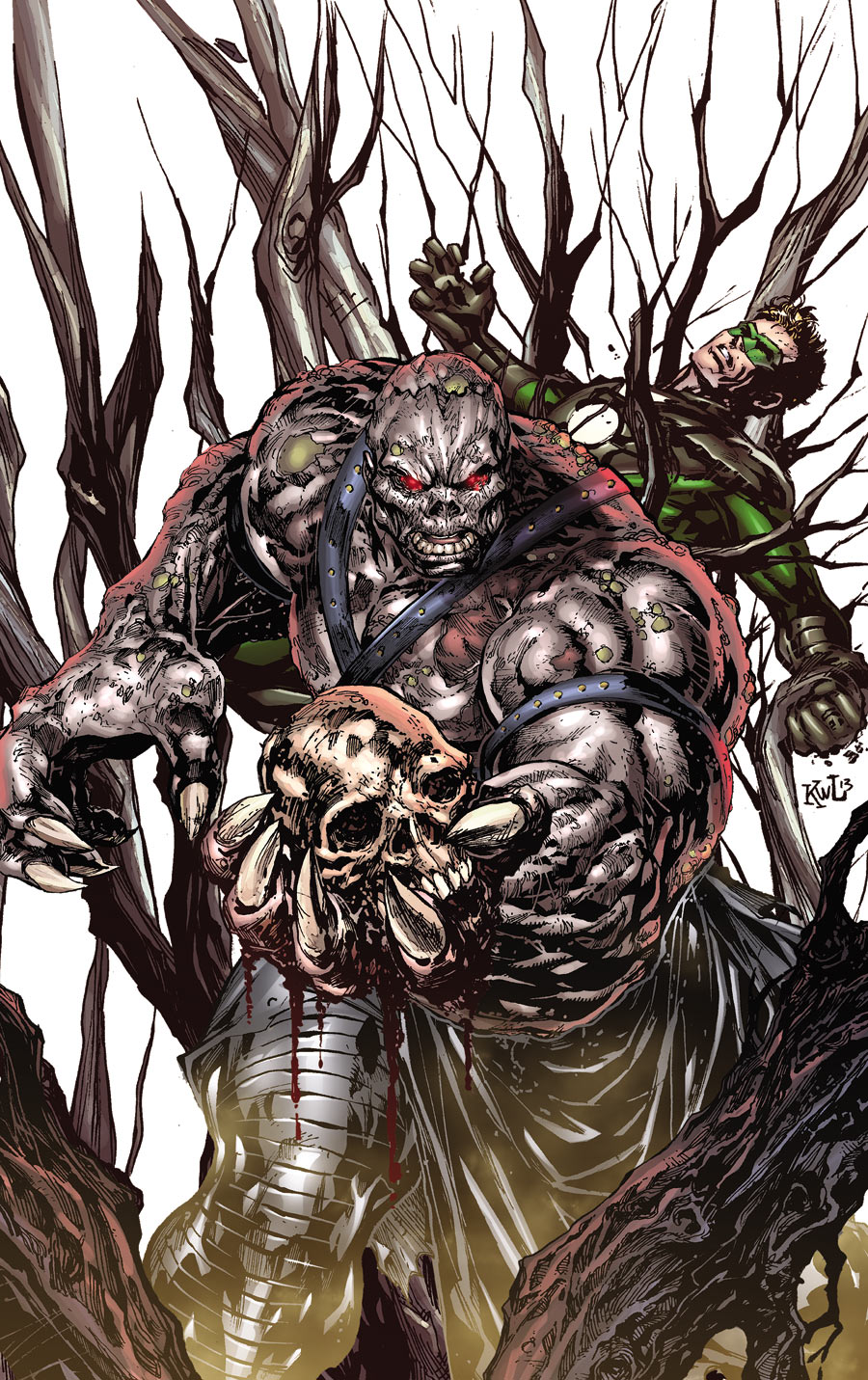
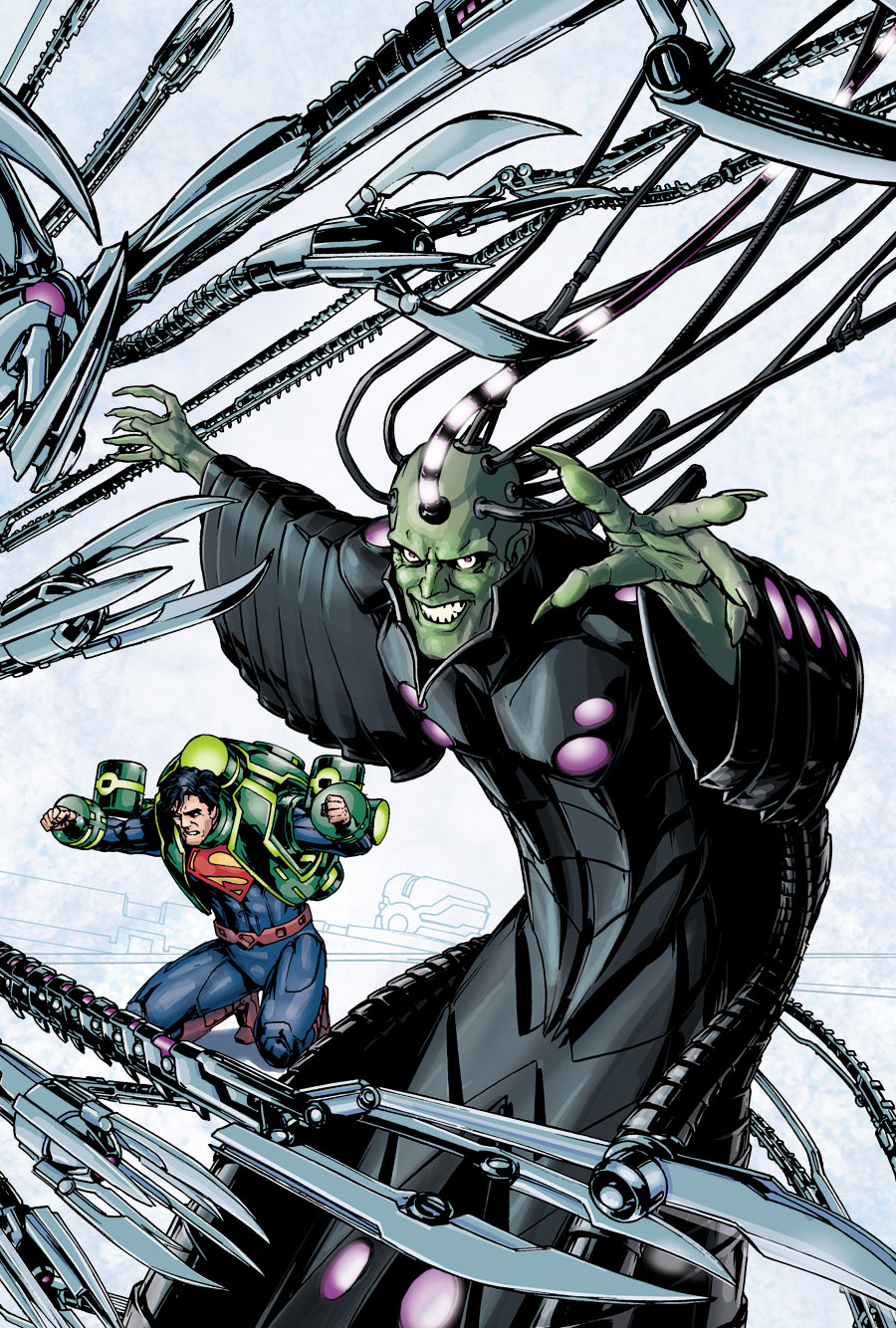
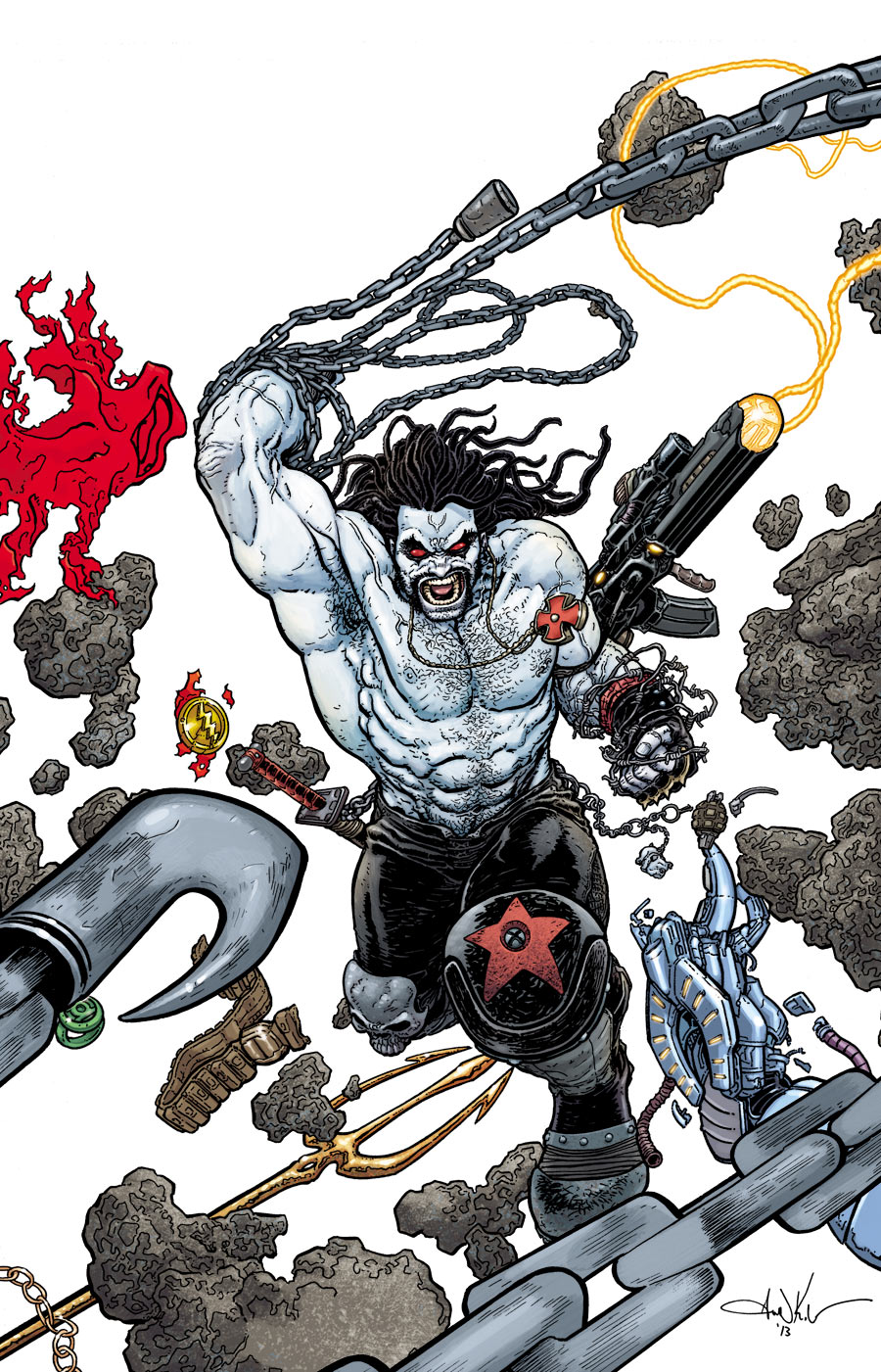
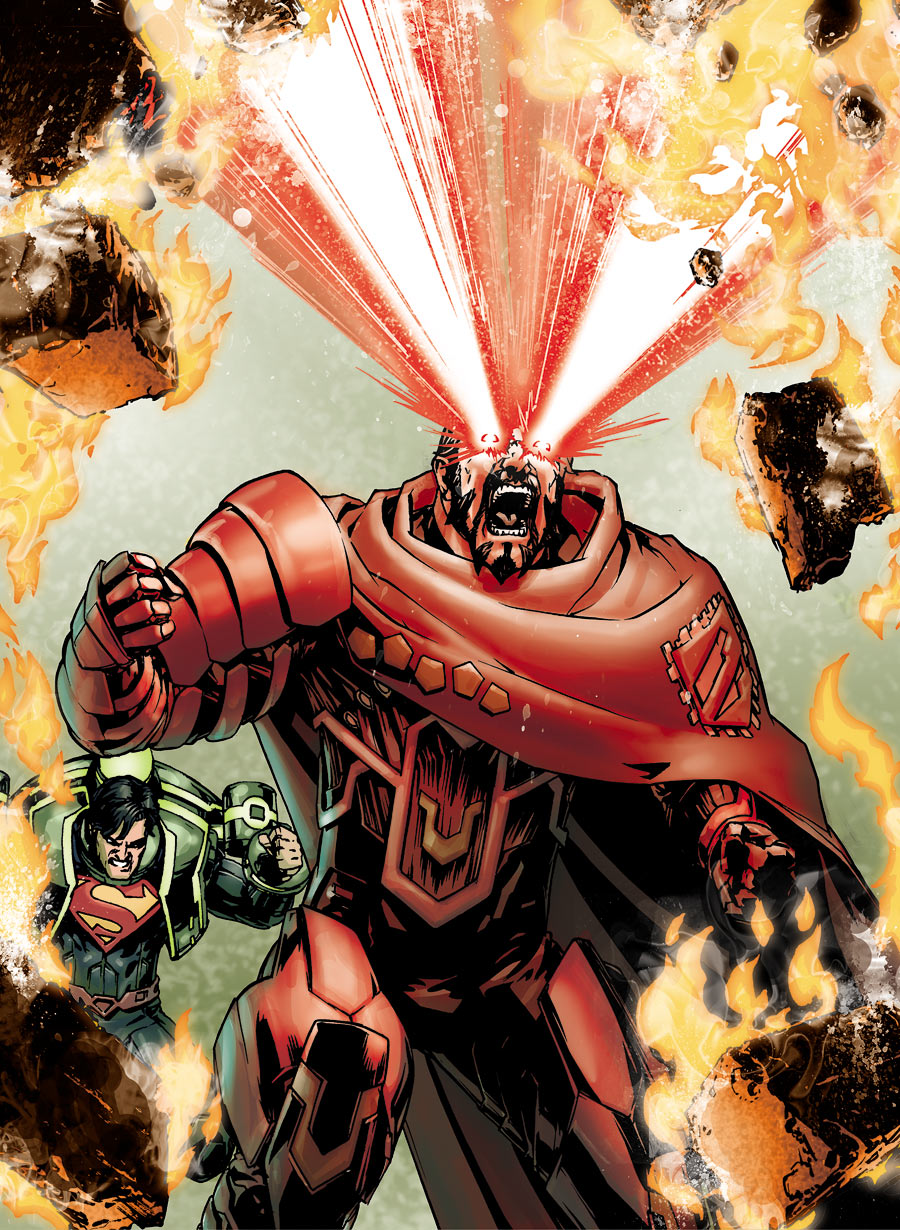
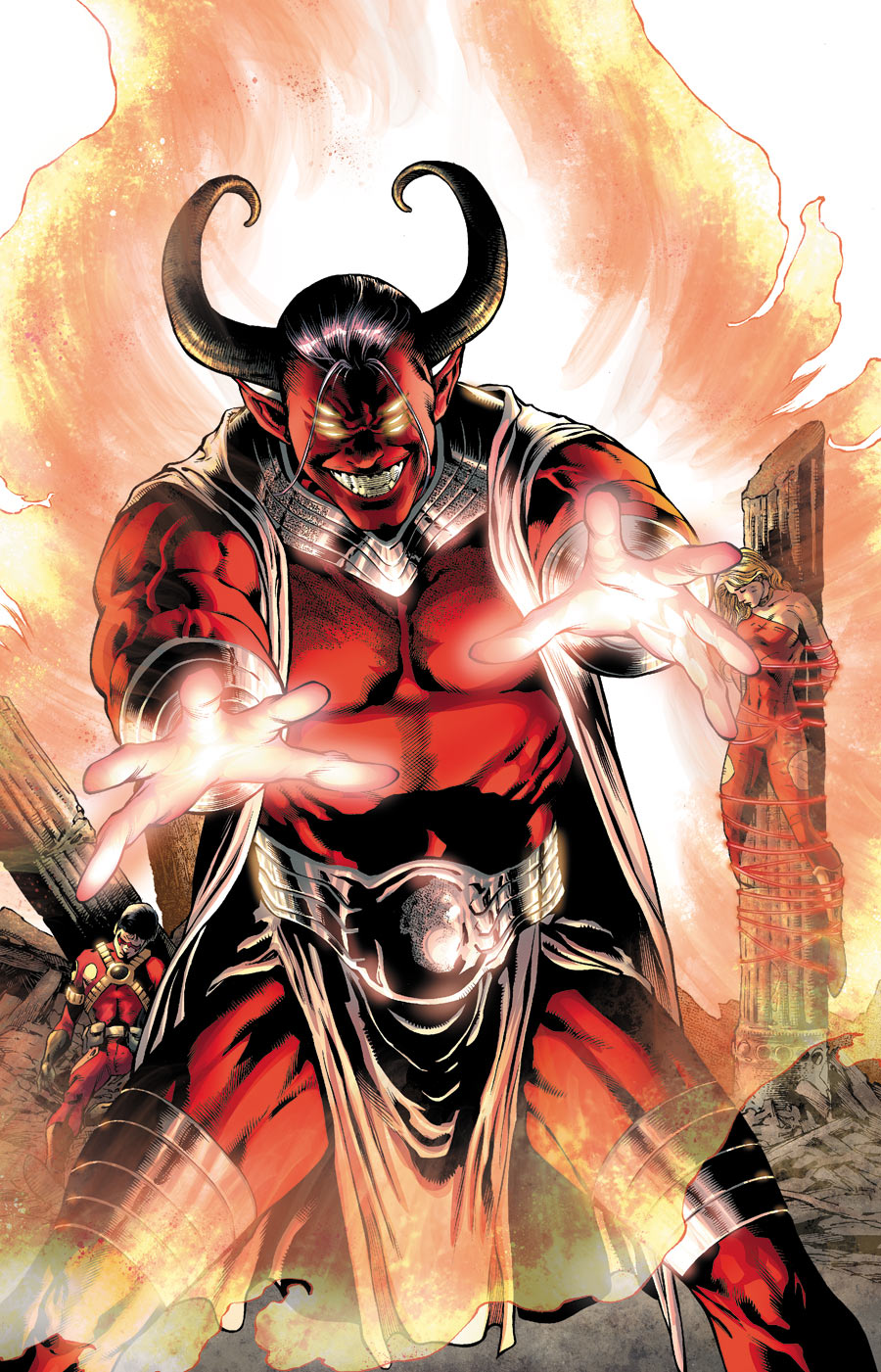
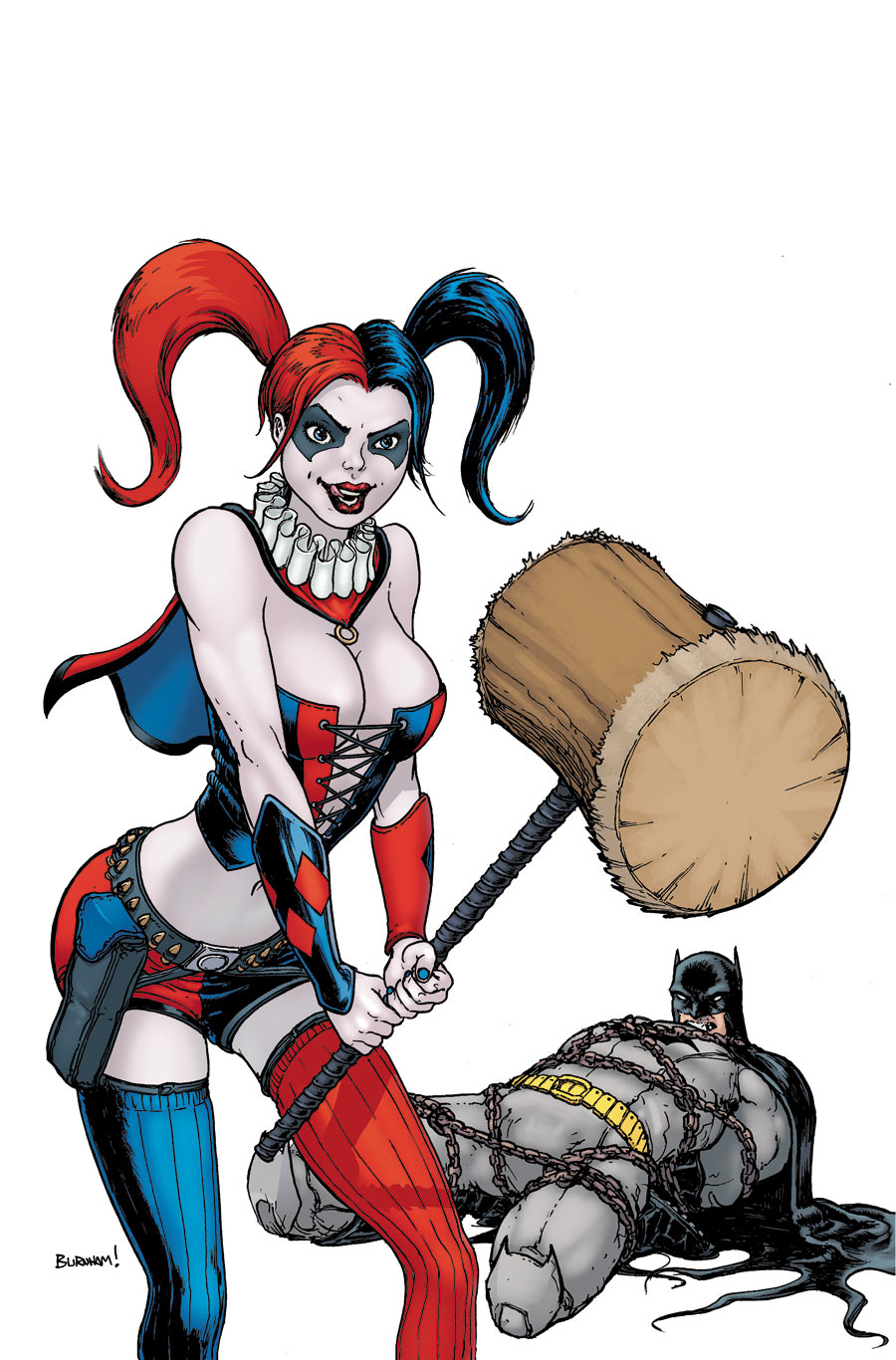
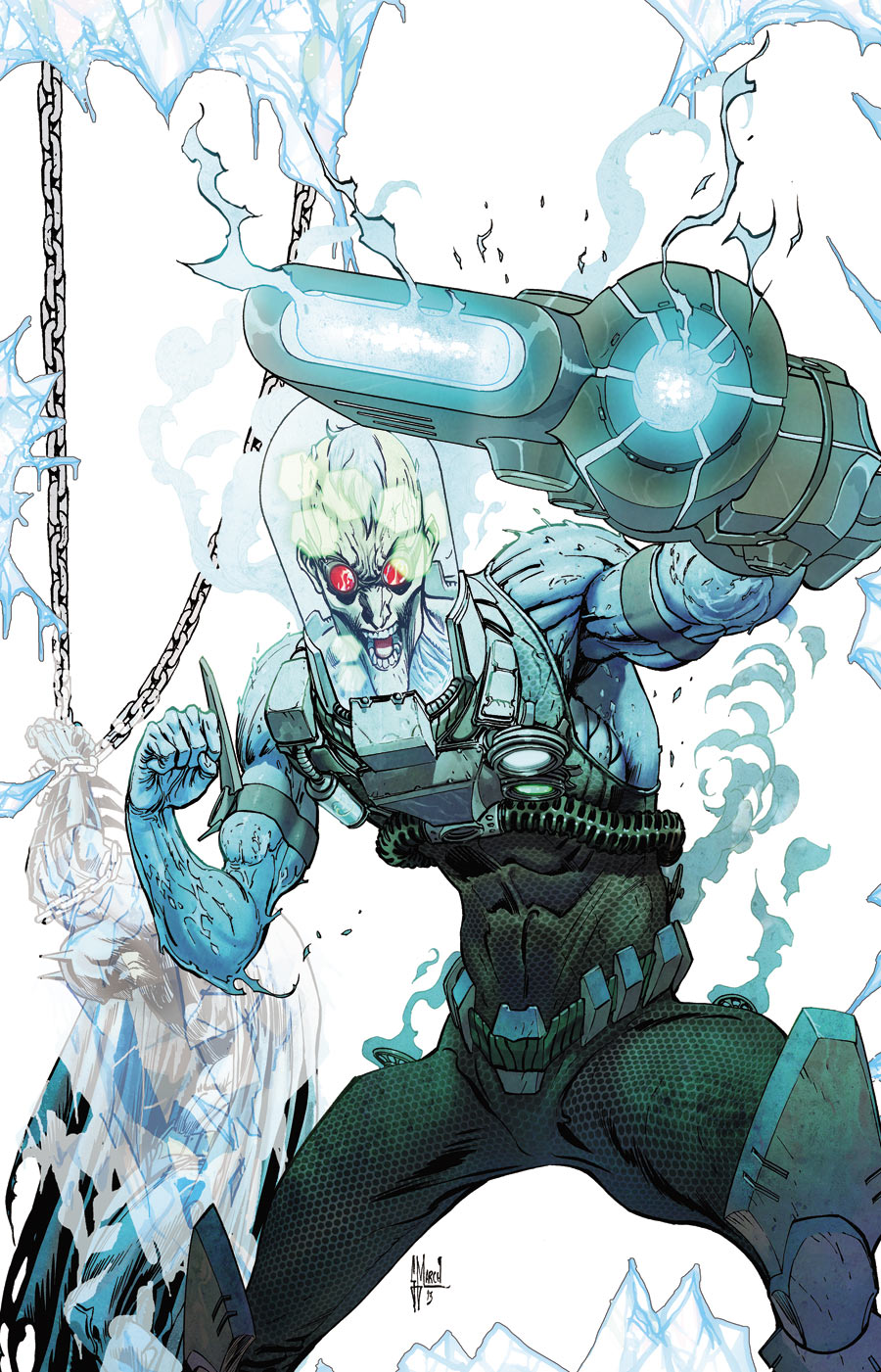
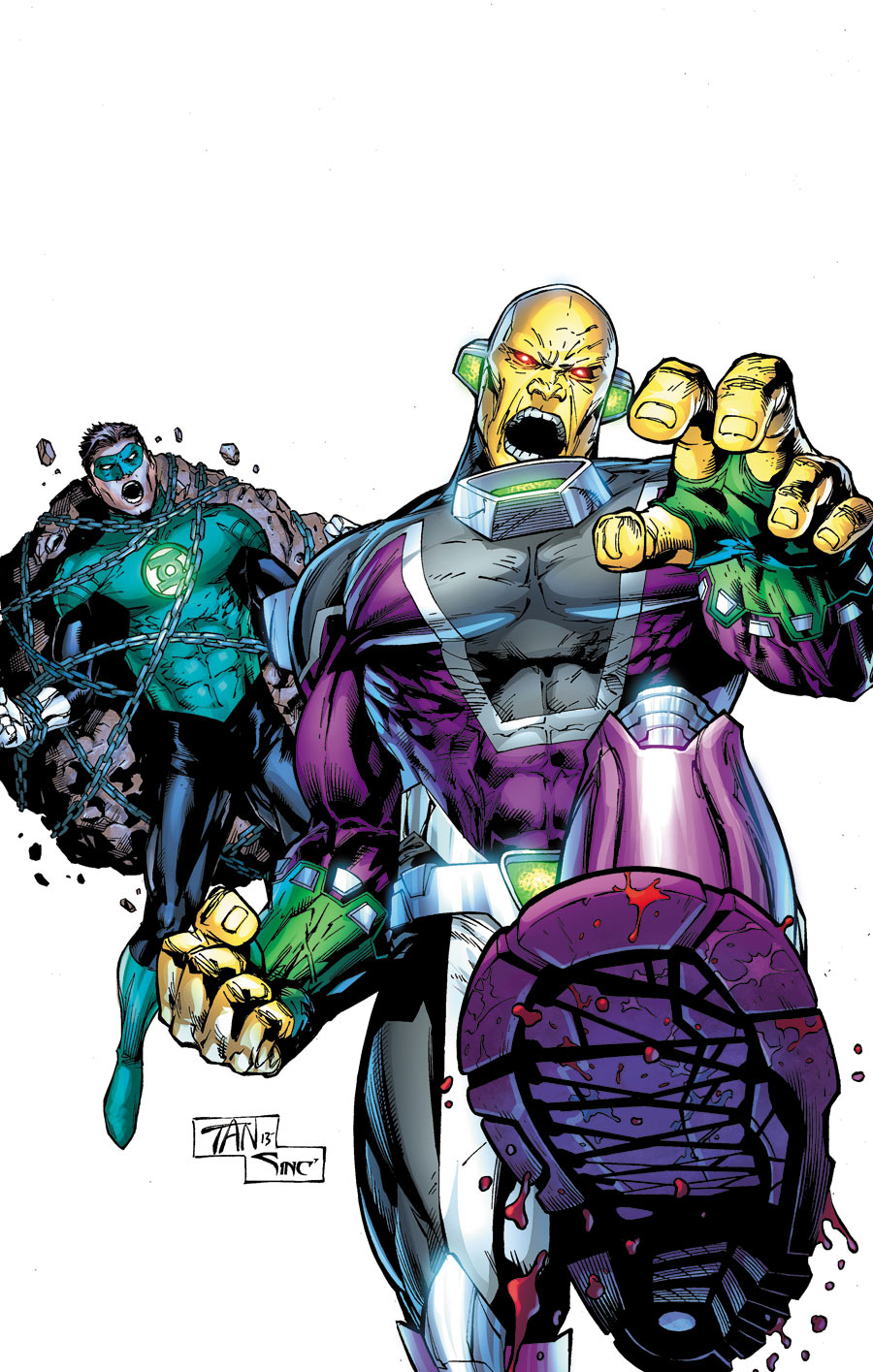
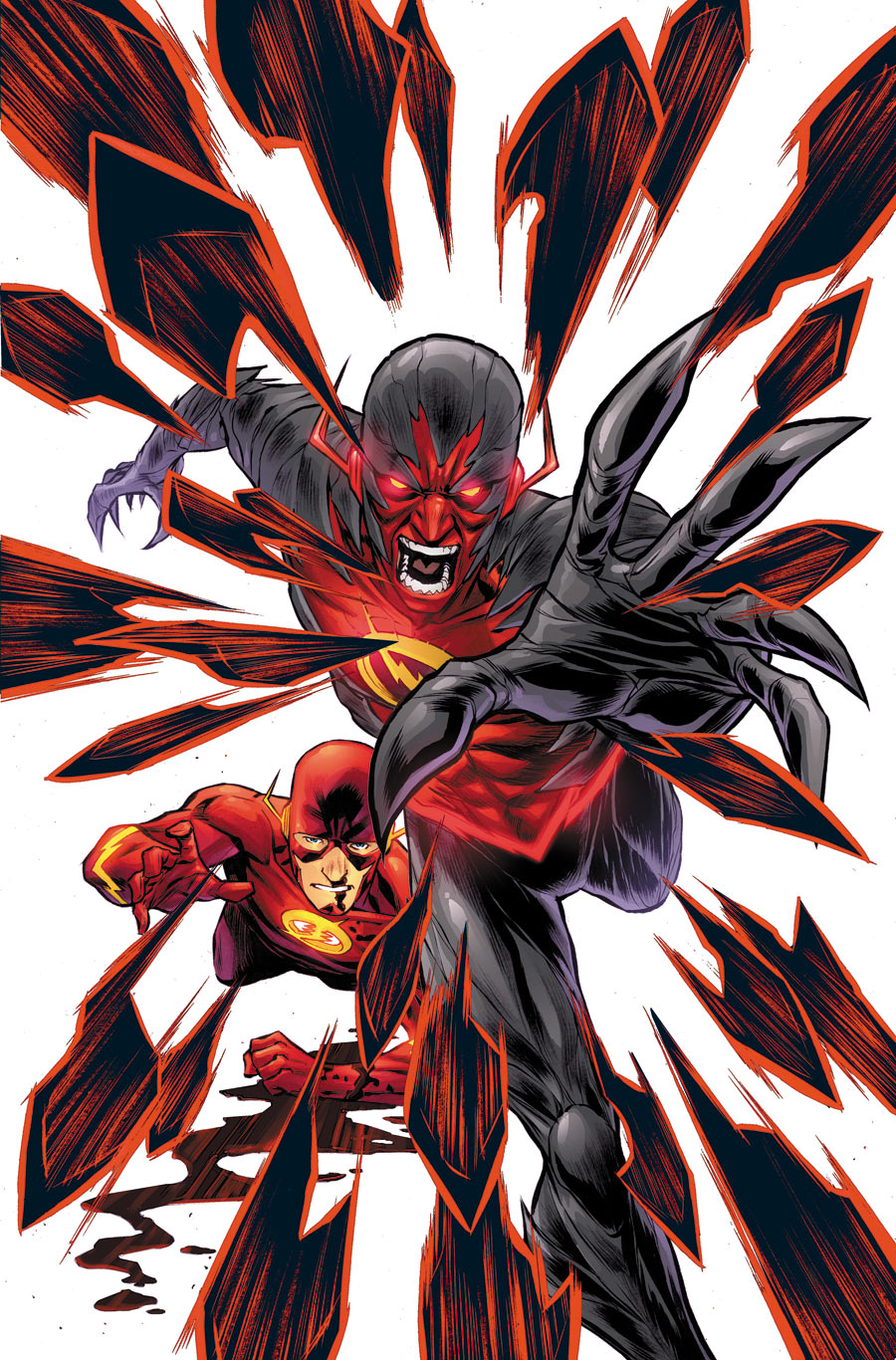
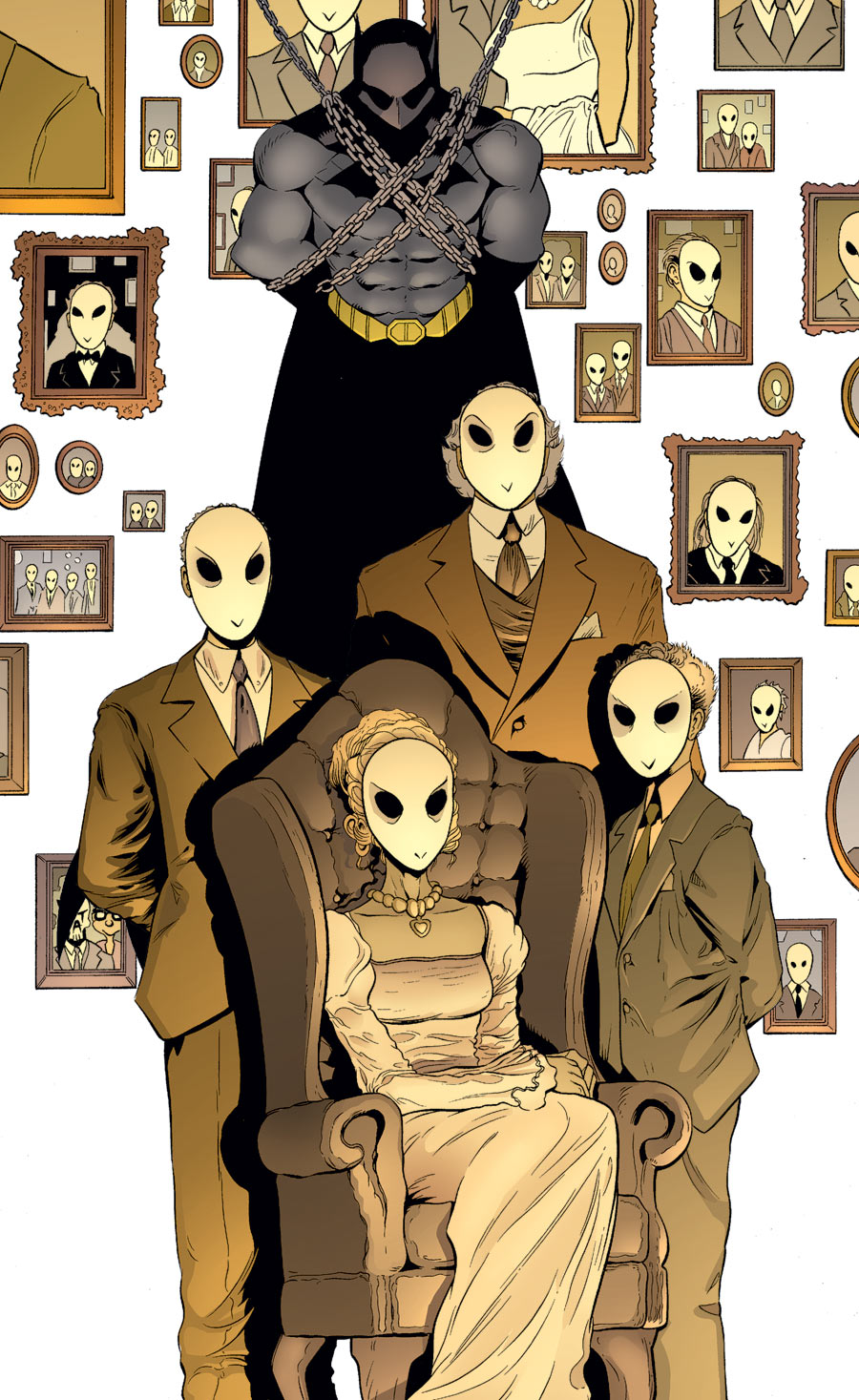
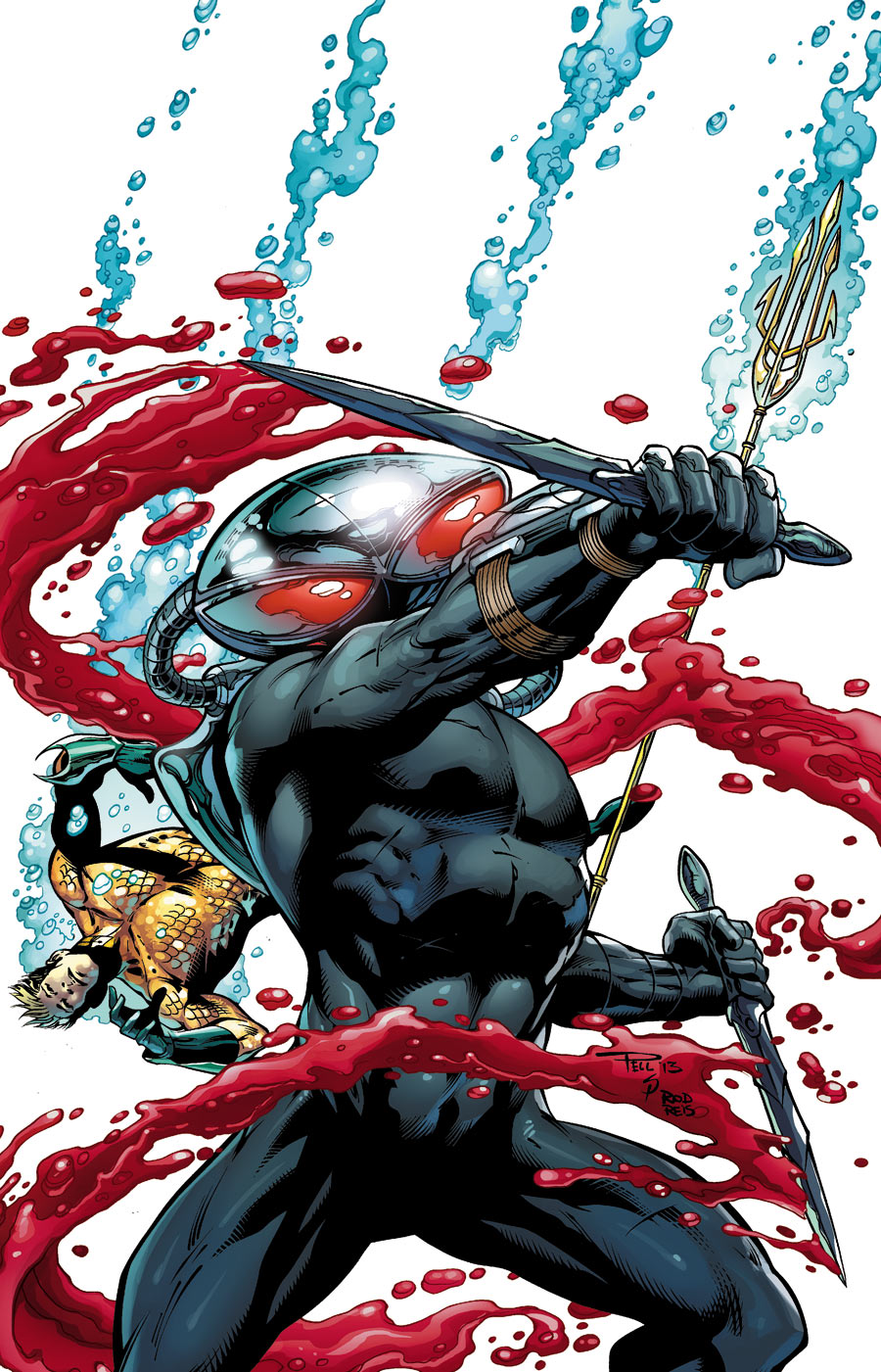
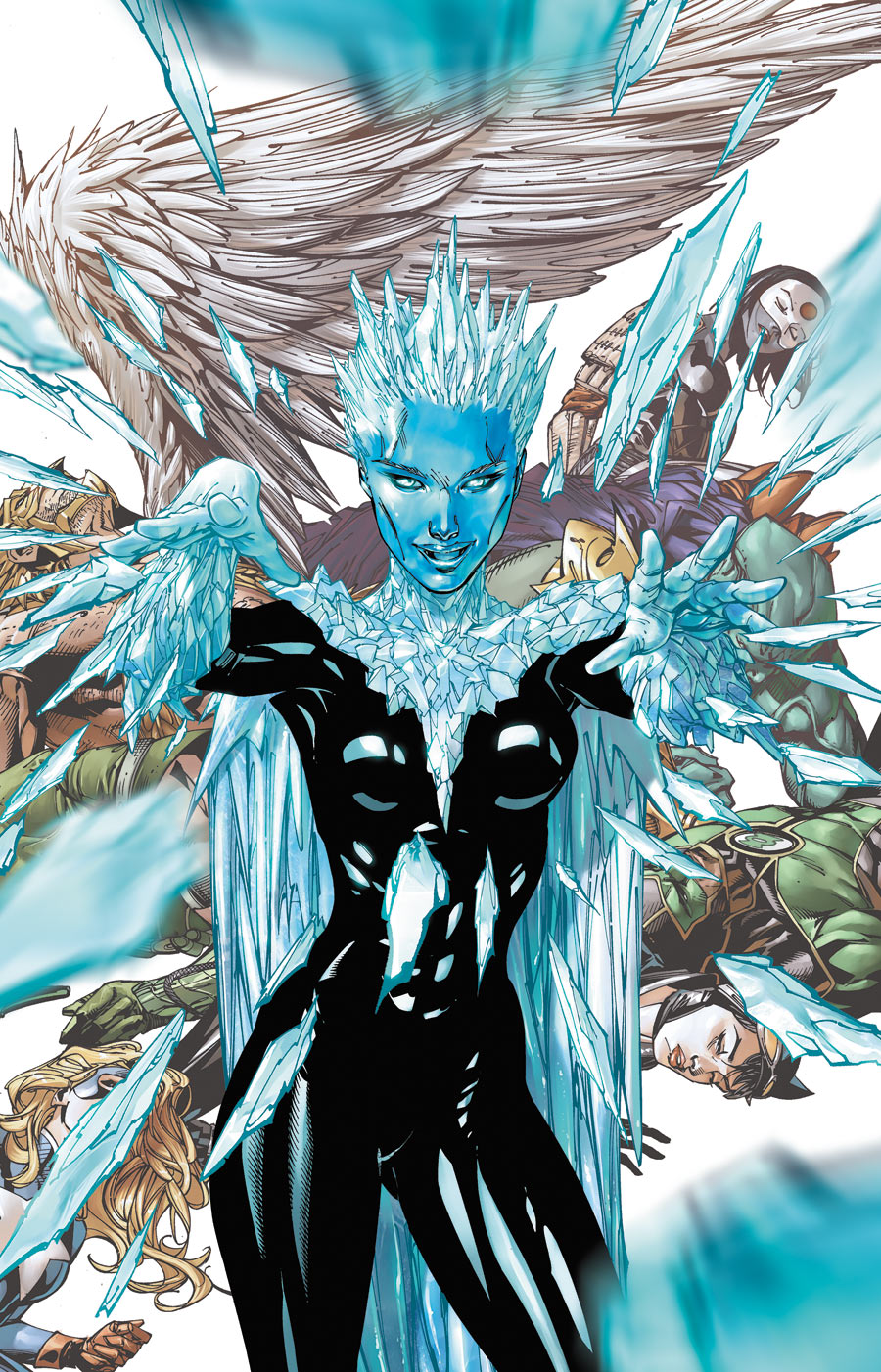
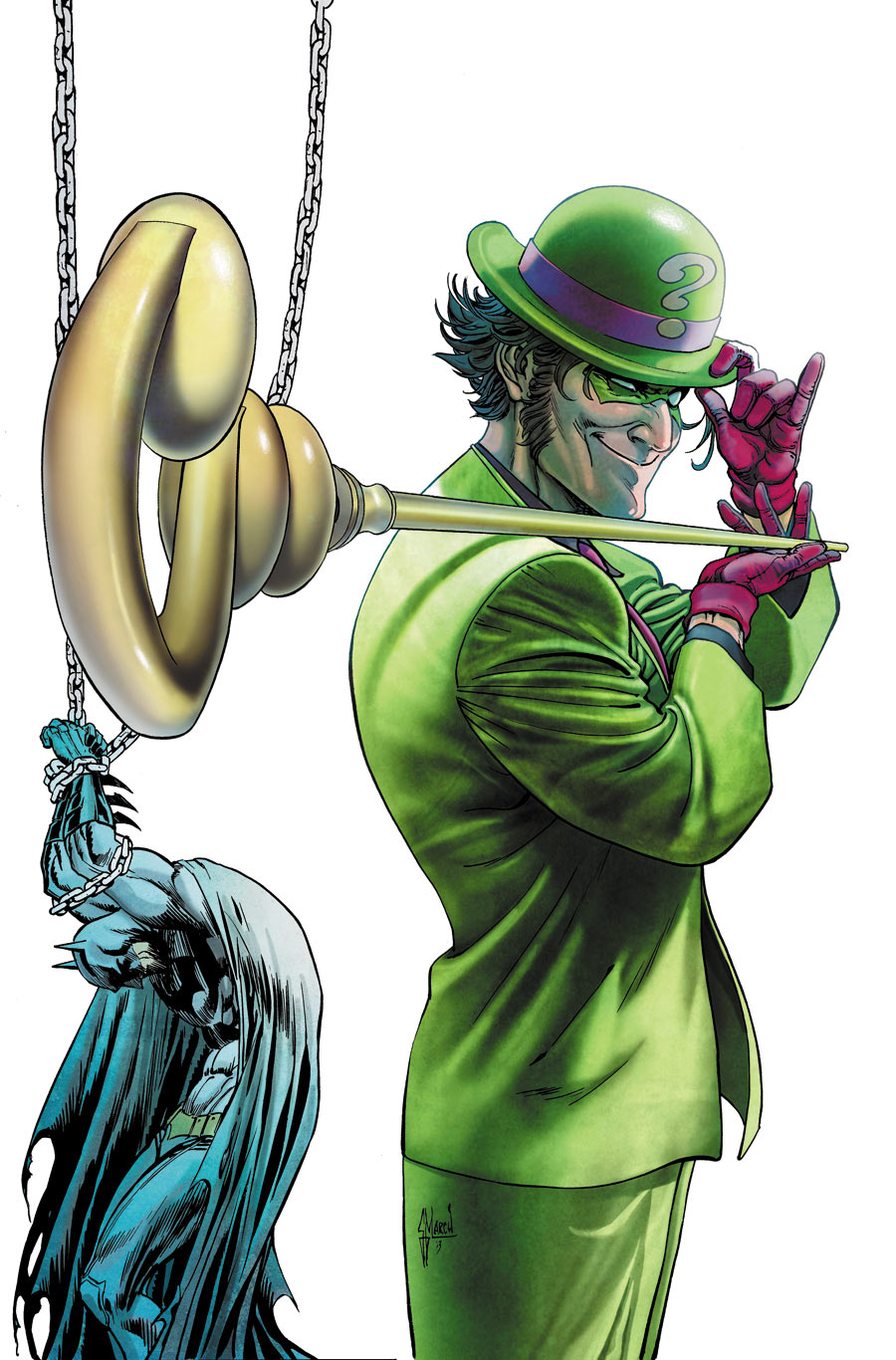

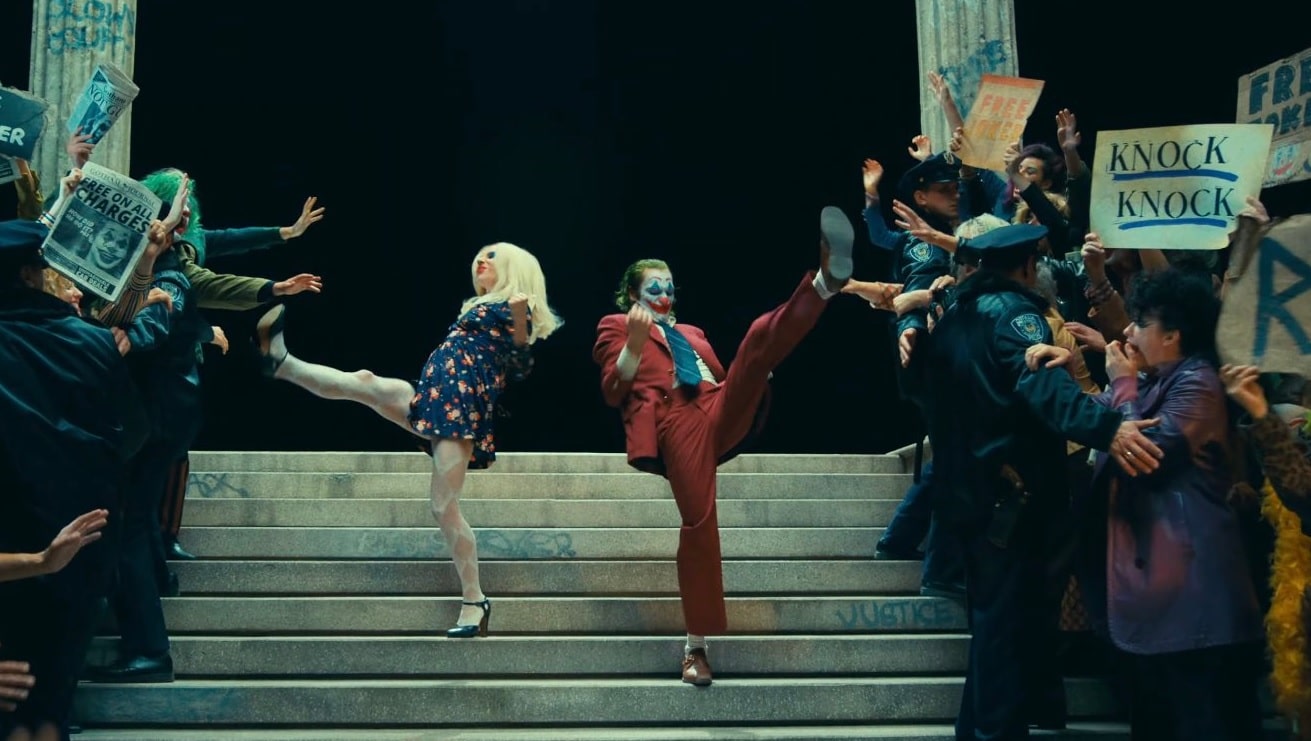



Did you read the Creeper issue last week? I’m still curious, even if that redesign/revamp is a trainwreck.
I haven’t! Once we reach the end of this (and I’m not reading 12-13 comics a week!), I’ll go back for the missing issues and finish off the month.
I’ve only read Lobo thus far, but enjoyed it a lot. I think he’s a character that would benefit greatly from his own series though, rather than being squished into another comic as he’s a bit too complex to explain in just one issue.
I did like that they underlined that this dude is actually evil and intelligent, a little different from his past chaotic violence approach perhaps.
GL chaind by branches
Superman chained in a space pillory, twice
Batman chained up twice
GL gained up to a rock
Batman chained up two more times
Just lazy art, or was this an editorial mandate or something? (More chains! No backgrounds! Go!)
but this whole this is kinda silly….right?
I trusted your reviews last week (reading only the ones you thought were good) and ended up reading two terrible comics in Darkseid and Desaad.
Should I trust you this week and pick up Lobo, Riddler and Killer Frost?
I said Desaad was terrible!! Sorry you didn’t like Darkseid though. I’d recommend Riddler and Killer Frost, but not Lobo, not really
Yeah Lobo is super complex. Better get Neil Gaiman to do a 75 issue series about him.
I saw an interesting comment about the Harley issue and its huge death toll. Back in the 90s there was a story arc in her series and some people were upset that she offed five people.
In this comic, she murders dozens of children with exploding video game systems. And she stands smiling at the exploding buildings around her and smiles. This issue is released on Sept 11, which funny enough is also the 20th anniversary of her first appearance in an ep of Batman TAS.
Geez. It almost seems like DC is in full 90s mode and trying to be ‘edgy’ to the extreme. They want to take every character and make them Legder’s grim Joker turned up to 11.
Ill pick uo the riddler story digital next month. Thanls for doing this can I get a link to the last one?
“The issue starts with the character crash-landing on Earth from outer space…. the origin sequence ends with Grundy being created, a hundred years ago, on Earth. So how did he end up in outer space, so he can subsequently crash back to Earth? No idea.”
Landing takes place after first arc of Earth 2 comics where Green Lantern “banishes” him to moon.
Here’s the first week of reviews, Cavemld! https://www.comicsbeat.com/villains-month-week-one-from-worst-to-best/
Thanks, hsssh – I only read the first two issues, so I wasn’t aware of that. An editorial note would’ve helped, in that regard!
It’s kind of a hopeless question why modern comics art is so often wilfully ugly, but those villain redesigns are almost without exception hideous.
The Zod designs were HORRIBLE. The clunky dare I say Asgardian armor head gear they wore were just bad. I think he was trying for a Byrnes Kryptonian style but failed. The Mister Freeze story was pointless since they already did a better version of his origin in the Annual by Snyder. (I think it was Snyder) Solomon Grundy seems wrong. His “powers” seem like they would be too much in a good fight. He drains life so fast then the only people who could fight him are the ones that don’t have to touch him. Lobo was good but the character is a mess due to DC having the orignial Lobo running around already and now saying it was an imposter. Who’s NOT going to want the original to win in a fight with the new guy?
Thanks for the kind words on Riddler.
Comments are closed.